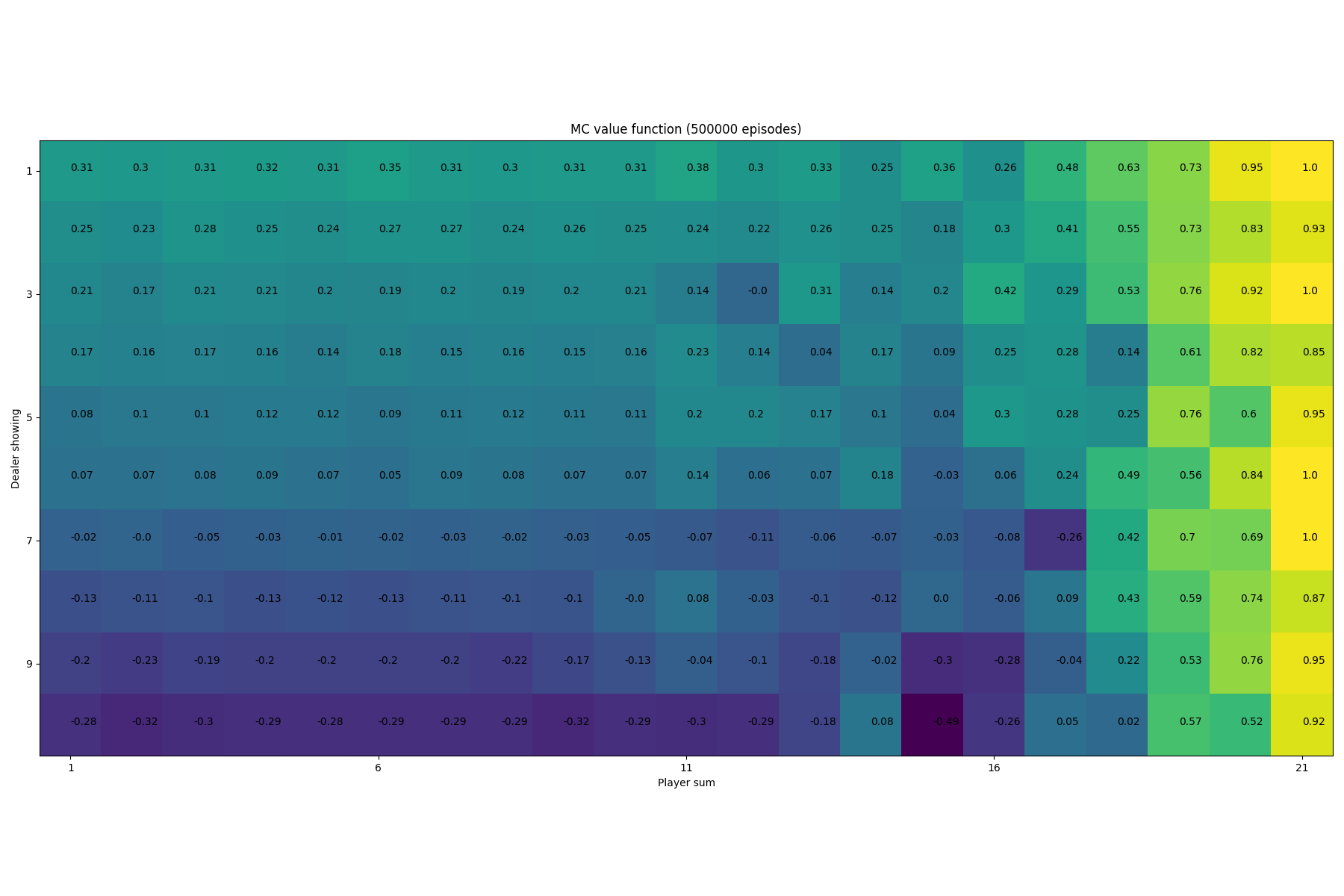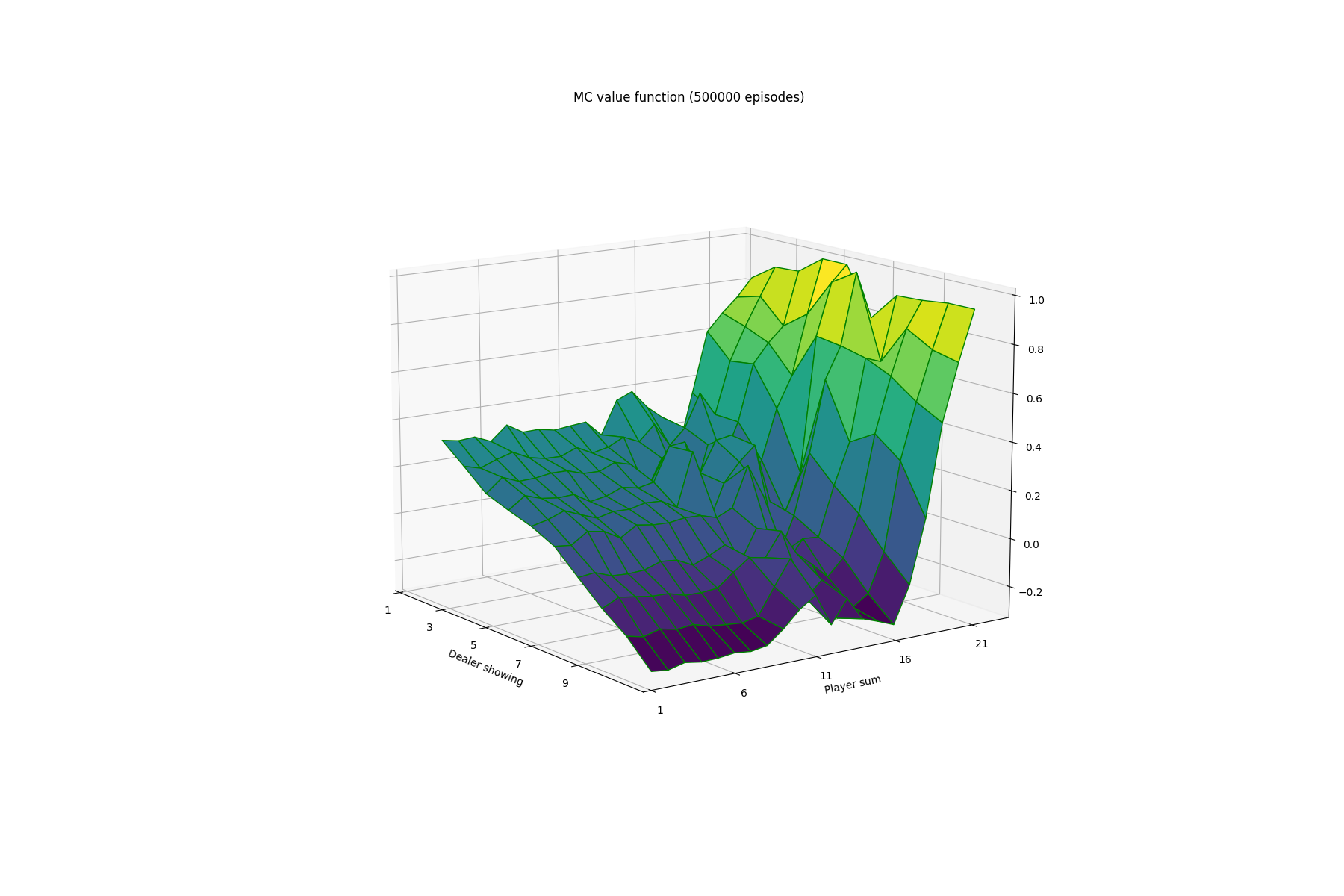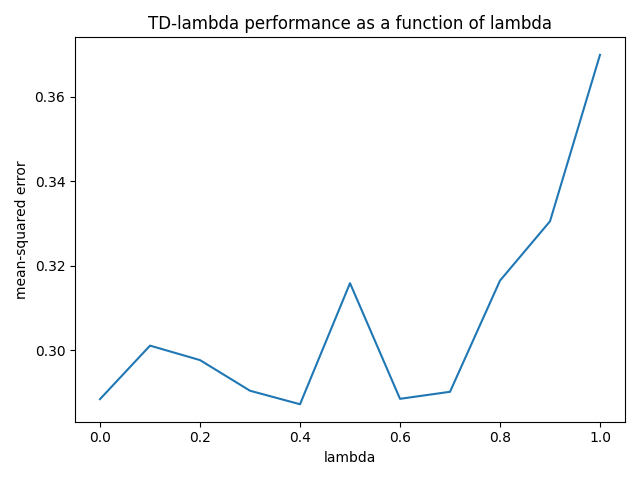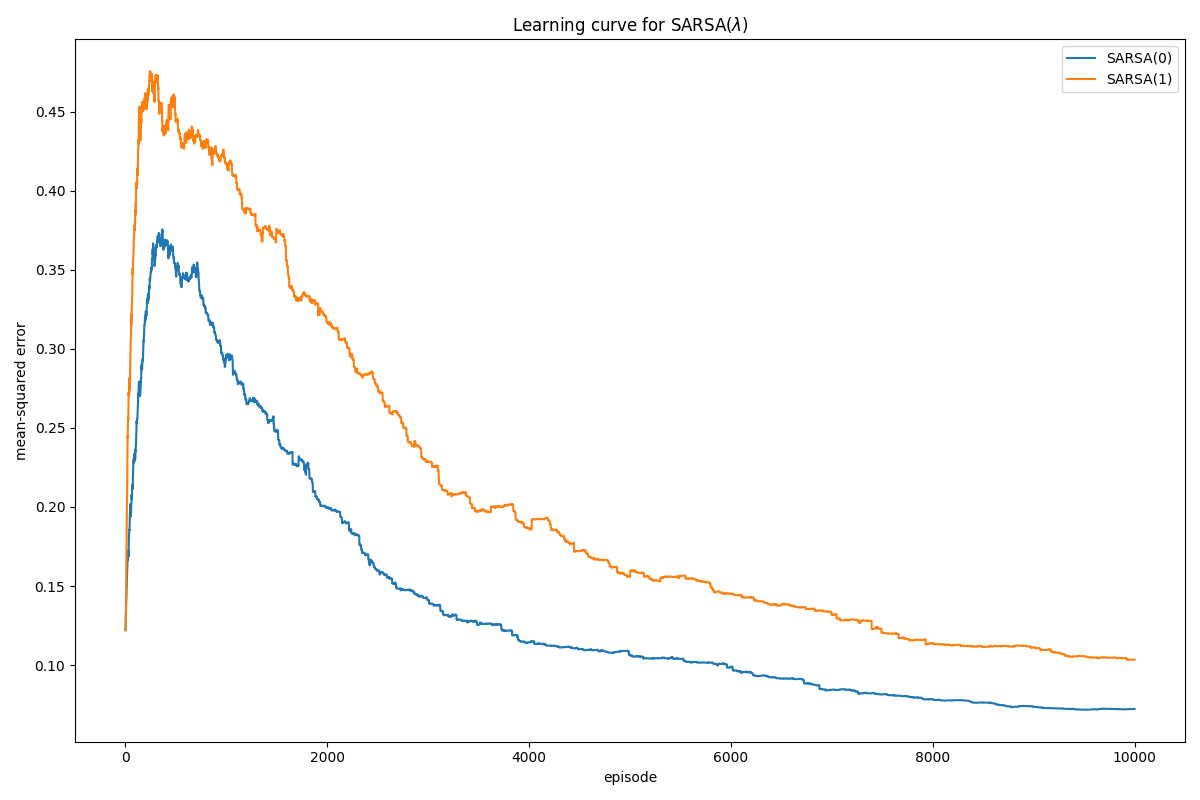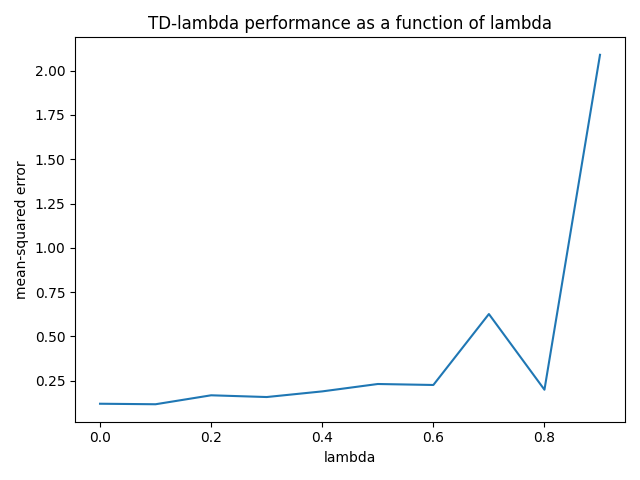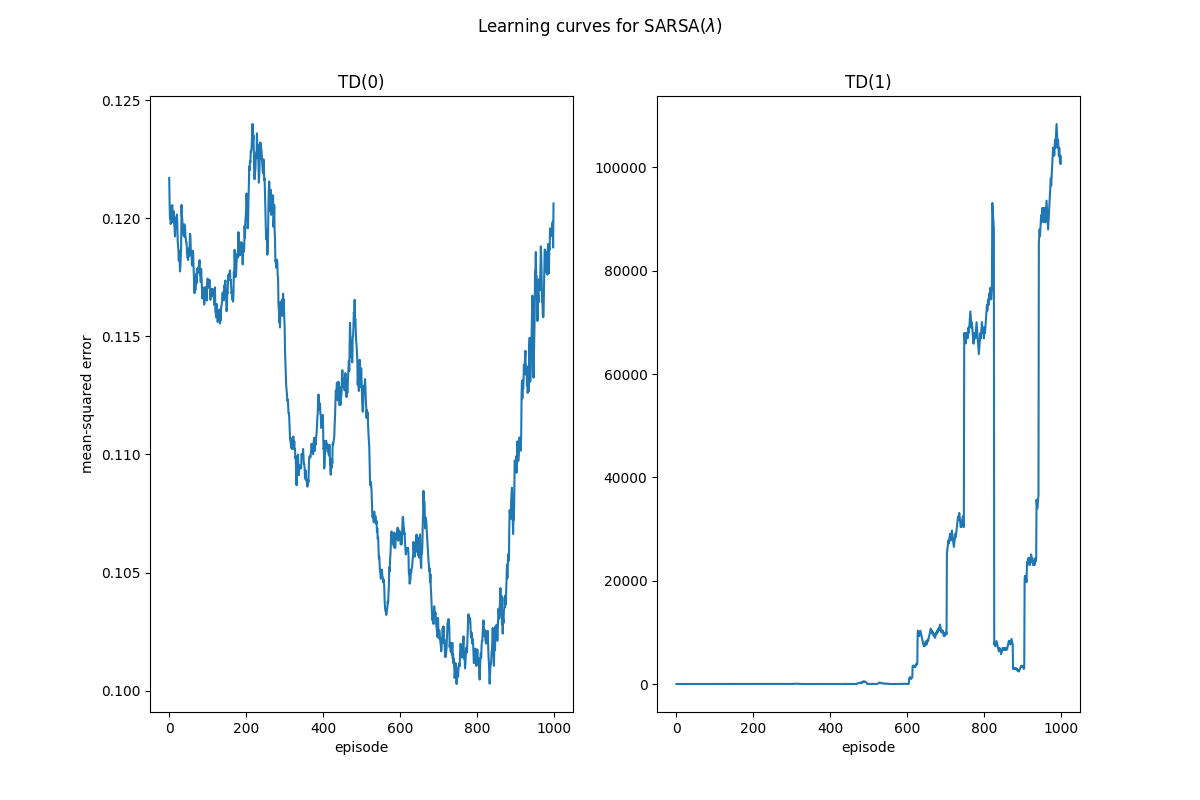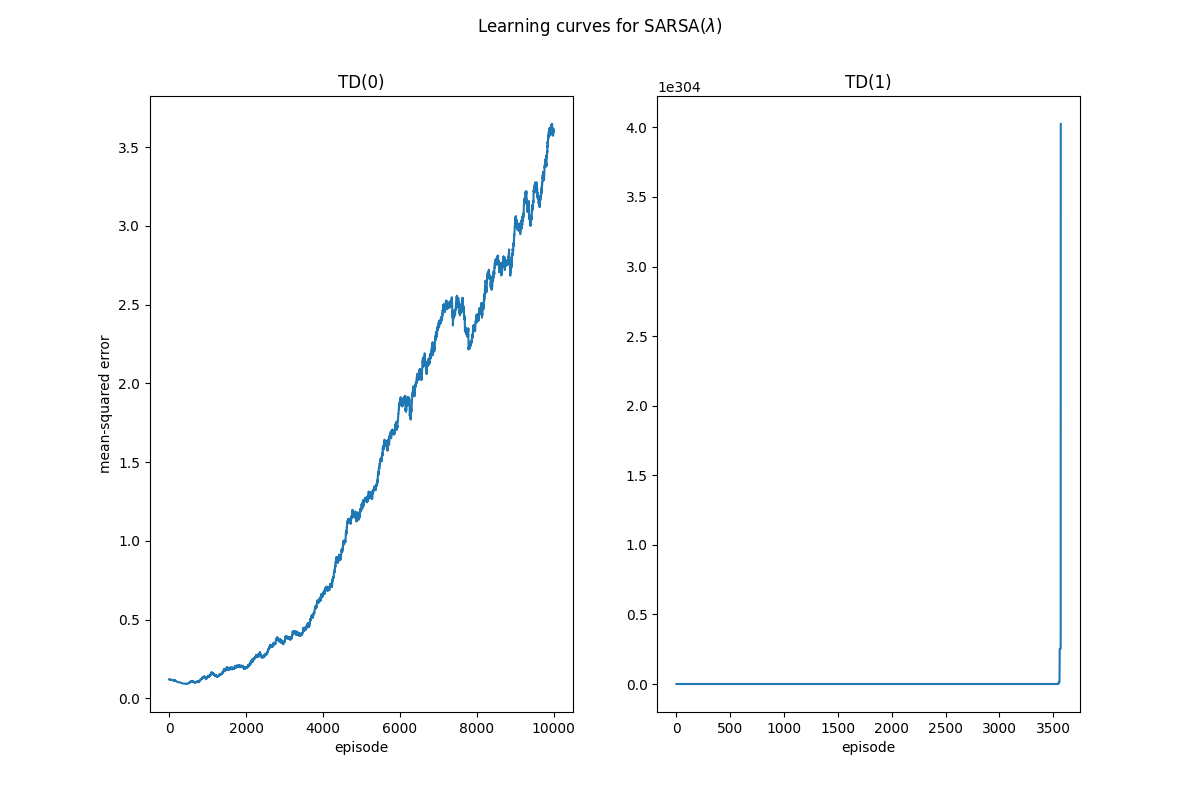Easy 21 - DeepMind RL course
Implementation of the Easy21 assignment (for more info, see Easy21.pdf). Various techniques from model-free reinforcement learning are used to find an optimal policy for the Easy21 game.
Dicussion
What are the pros and cons of bootstrapping in Easy21?
Bootstrapping using Temporal Difference learning (TD) means that we update a guess towards a guess, i.e. update a current approximation of the value function towards the current reward and the approximation of the value of the next state. Bootstrapping with TD-learning has less variance compared to Monte-Carlo learning, since it depends on several intermediate steps rather than all intermediate steps until the overall reward. Bootstrapping often works well in environments that are inherently Markov. Since the value of states in Easy21 is only dependent on the current state information (what the dealer showing and the sum of the player cards), Easy21 is inherently Markov and thus well suited for TD-based prediction. A disadvantage is that it can take a long time for the value information to propagate to all states in the MDP. This is particularly the case for TD(0).
Would you expect bootstrapping to help more in blackjack or Easy21? Why?
Some of the main differences between Blackjack and Easy21 are that Blackjack includes 4 cards with a value of 10 and an ace which is either worth a 1 or 11. Another difference is that in Blackjack, both the dealer and player sum can only increase over time. In Easy21, the dealer or player sum can decrease as well. Note that for both games, cards are sampled without replacement.
It could be asked for which game the TD target would be more accurate. Consider that for Blackjack, there is a maximum number of steps that can be taken before the player sum is 21 or above. For Easy21, there is no such maximum, which means a single episode can take much longer. From this perspective, Blackjack contains less uncertainty about the future than Easy21. Therefore, I would expect short-term estimates of the value function to be more accurate for Blackjack than for Easy21, i.e. I expect bootstrapping to be more effective for Blackjack. However, this is not obvious to me.
On the other hand, it could be argued that for Blackjack, the state space is effectively doubled by including the possibility of a useable or unusable ace. Since bootstrapping takes longer for information to propagate to all states, it could be argued that bootstrapping therefore works less well for Blackjack, since it would take a longer time to find a good estimate of the complete value function.
What are the pros and cons of function approximation in Easy21?
Pros:
- Unlike table lookups, function approximation allows us to consider the relationship between state-action pairs by encoding their similarity. In this case, we encode this similarity manually using features based on state-action cuboids. An alternative option is to use learned features, e.g. using a neural network that directly takes the raw state-action pair as input. Whereas table lookup stores an independent value for each state-action pair, function approximation allows us to update the value function for several similar state-action pairs based on the value of a single state-action pair.
- Less memory required to store the value function
Cons:
- Training is less stable and can diverge much easier than when using a table lookup method
- More sensitivity to hyperparameters, e.g. the number of episodes
How would you modify the function approximator suggested in this section to get better results in Easy21?
- Try out different step sizes, maybe one that decays over time
- Try out a decaying epsilon value, e.g. inversely proportional to the number of times a feature vector has been seen
- Try batch SGD to get a more accurate and stable approximation of the loss gradient
Monte-Carlo Control
See exercise2.py.
Action-value function using MC evaluation and decaying epsilon-greedy policy improvement (asymptotically converges to the optimal action-value function):
SARSA(λ)
See question3.py.
Interpretation
SARSA(0) is biased in the sense that it only considers the current reward and the value estimate of the next state. SARSA(1), on the other hand, is similar to Monte-Carlo in that it updates towards the undiscounted return for the rest of the episode. This makes it less biased, but the value function approximation has more variance. However, SARSA(1) is different from MC in that it updates online, i.e. every time step, as opposed to the MC control which updates offline, i.e. once at the end of an episode.
Because SARSA(1) implies more variance, it makes sense to me that it takes longer for it to converge to a low error. For SARSA(0), I would expect it to learn faster, but perhaps not converge to the optimal value function. Looking at the plot above, after 10,000 episodes, SARSA(0) outperforms SARSA(1). It may be that because the Easy21 game is inherently Markov (i.e. the current state is sufficient to predict the future), looking at only the immediate reward and state value is sufficient to effectively learn the value function (which is done in SARSA(0)).
Linear Function Approximation
See question4.py.
One thing that is notable about using the linear function approximator is that the number of episodes suddenly becomes an important hyperparameter. For example, both TD(0) and TD(1) diverge after running for 10,000 episodes:
